A few weeks
ago I was in Reno, attending the CRM User Group Summit as a presenter and of
course CRM UG Medic. My most visited presentation with more around 80
participants, was on 10 tips for success designing CRM Solutions.
The general
idea is when designing solutions for Dynamics CRM there are some things that
you have to take special care for and that I often see people missing, so it is
partly in the positive, ie DO this, but also in the negative, DON’T DO this.
1. Most important
issues first
Make sure
to focus on what is really important for the business when implementing CRM.
Too often focus is put on technical details instead of the issues that really
make differences for the business. Like making sure to never miss a quote,
never miss following up a lead and how the system is to support this.
Sadly often
a lot of effort is instead put into making more or less perfect solutions,
especially when working in more classical waterfall project methods when it is
not uncommon that an improportial amount of effort is put into fixing rather
insignificant features and features of high business impact are almost over
looked as “trivial”.
2. FIT-GAP
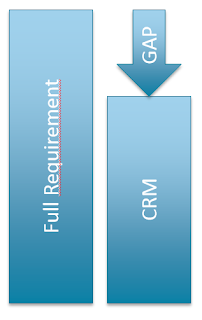 Base your
requirements on Microsoft CRM. Not on a blank sheet of paper. Some organizations
start off with trying to set requirements in a very general which might be
useful if you do not know if it is a CRM system that you are choosing. However,
the market is changing and more and more customers are becoming more and more
aware and have come further in their decision process prior to contacting a
partner or setting down any requirements. This usually results in the fact that
many organizations buying CRM already have chosen a CRM system when contacting
a partner, and hence defining requirements from the bottom up is not very
useful, it is a lot better to start from the system that has been selected and
based on this, look at what is missing.
Base your
requirements on Microsoft CRM. Not on a blank sheet of paper. Some organizations
start off with trying to set requirements in a very general which might be
useful if you do not know if it is a CRM system that you are choosing. However,
the market is changing and more and more customers are becoming more and more
aware and have come further in their decision process prior to contacting a
partner or setting down any requirements. This usually results in the fact that
many organizations buying CRM already have chosen a CRM system when contacting
a partner, and hence defining requirements from the bottom up is not very
useful, it is a lot better to start from the system that has been selected and
based on this, look at what is missing.
Other beneficial
aspects of this can be that when defining requirements without the context of a
system, it is easy to get fixed on a certain way of solving a problem. If
instead, starting with a particular CRM system, it is much easier to define
what is missing or what needs to be changed in order for this system to work
for us, without being locked down by previous conceptions of how a particular
problem should be solved that were agreed upon during the requirement
gathering/analysis phase.
The most
typical non-fit-gap requirements I have seen are public procurements. In these
cases the procuring entity believes that it is more objective to not decide on
a system before hand and hence define the entire CRM system in the
requirements. It is not uncommon in these requirements to see requirements such
as:
·
Ability
to list all companies showing name and address of company
·
Ability
to edit company information from several different computers with different
user logins
And so on.
Imagine
trying to define all features of Dynamics CRM this way. Horrible.
It is much
easier to start with let’s say Dynamics CRM 2015 and then have requirements
such as:
·
New
field for storing Company Credit Level on account in the following levels AAA,
AA, A, B, B-
·
Only
specific group of users are to be allowed to change Company Credit Level on
account.
It becomes
a lot more to the point.
3. CRM
Functional Knowledge
Know what
Dynamics CRM does from a functional perspective out of the box.
-
What
is Sales Force Automation?
-
How
does customer service work?
-
What
is customer centricity/360 degree customer perspective?
-
How
do you manage a campaign in CRM?
These are
things that the people involved in implementing the CRM system need to know. I
have seen many implementations where this skill is lacking, it can usually
result in existing features being recreated with code, increasing total cost of
ownership for the solution. It may also reduce the ability to install addons as
these usually are based on the built in features being used.
4. CRM
Technical Knowledge
Technical
knowledge of the platform is also a vital skill when implementing CRM. These skills
include;
-
Configuring
CRM
-
Developing
CRM
-
Installing
CRM On-Prem
-
Setting
up CRM-Online
-
What
are supported customizations
-
How
to minimize TCO of customizations/developments
-
Peculiarities
of CRM
o
Native
vs manual N:N relationships
o
Date
only limitations of multi time zones
o
Visible
data model
-
Best
practices of developing in CRM
o
Using
solutions and publishers
o
Application
Lifecycle management (ALM) with Dynamics CRM
o
Solution
framework limitations and deployment strategies
As these
skills range from high level solution architecture, system architecture to
developer and application specialist, it can be hard to find people to fill all
these skills.
Due to this
reason, it is not uncommon that companies employ technical people without
specific Dynamics CRM skills. This often results in data models that are
suboptimal with too high level of abstraction, which can be a good idea in a
classic code-db application where the data model can be hidden, however, in CRM
where the data model becomes very visible, this is not a very good idea.
Another
common problem I see is that application specialist with too shallow technical
skills are charged with designing data models. This can result in data models
that store data in the wrong places, for example account information on contacts
due to not truly understanding how where information belongs. These people
often also lack the skills of designing more complex data models required for
complex problems, which cannot be solved with a too simplistic data model.
5. Business
Knowledge
How does
the customer’s business work? Sad to say so, but someone actually has to know
this when implementing the CRM system. It seems obvious to most of you I hope,
but trust me, I have seen and heard the weirdest things, like “oh, you want to
book meetings with a customer several
times, well, you should have said so”. Some things are so self evident that
most people would never think to put them into a requirement.
This skill
cannot only be on the customer side, people with some technical skills have to
have some business skills as well. Common examples can be that an organization
that are moving from an old CRM-system to a new are using sub-optimal business
processes due to the fact that the old system limited what they could do, or
they might have grown or transitioned. When challenging the business processes
that are put into the requirements, it might soon become evident that the best
action might actually be to reengineer the business processes to make them
leaner and better fit the new organization and also what the new system
actually can do. The benefits of this can be many, like faster processes
involving fewer steps, higher level of automation and higher quality control
abilities to mention a few. However, it is important to understand that it is
also scary for an organization that thought they might just start Dynamics CRM
Online to get some boost in their sales who start to realize that they might
need to undergo a larger organizational change management effort, whatever the
potential long term benefits of these are, as not all organizations have the
luxury of being able to act in a long term fashion. Hence approaching this
subject carefully, is probably advisable.
It is also
essential to have a clear high level vision for what role the system is to
play, what is its purpose? Sometimes this vision is either non-existent or very
blury resulting which makes it complicated to prioritize and focus the
implementation on what is important. A simple verison might be to make sure to
never drop a single lead and follow up on every quote in a timely manner. Then
that vision can guide prioritization of requirements during the implementation.
I have seen
this lacking often in several different ways. Sometimes it is simply that a
customer explains how they work and then that is implemented, even if the
underlying processes that the system is to support are obviously sub optimal,
without any discussion with the customer. Many customers I work with,
appreciate it when I ask why they want to implement something a certain way,
why they work a specific way and what the business goals they are trying to
support with the process are.
Another
common error I see is that when Dynamics CRM is to be implemented, the
requirement is “It is to work and look as much as the old system as possible,
but with all the cool features of Dynamics CRM”. This implicitly means that all
the old processes are to be used, nothing is to be rethought or reengineered
despite the investment in the new system. These implementations very seldom
become a hit, and the TCO of maintaining them are usually a nightmare since a
lot of code and weird customizations are required to make the system act and
look like the old. And the fact is that it never will, especially if the old
system was a tailor made, since those systems will always have specific areas
which will have an edge on an off-the-shelf system like Dynamics CRM. The
benefits of a system like Dynamics CRM are that you will get so much more bang
for the buck in OOB features, investments and maintenance that it will be worth
it every day of the week, as long as you are can stay within the bounds of what
the application supports.
6. Business
Goals and requirements
The picture
above shows the typical process of how functional and non-functional
requirements are based on business goals and then technical requirements are
based on functional requirements.
What I have
often experienced is that customers come to us directly with a technical
requirement, for example “Please put a dropdown with the values X, Y, Z” on the
account form.” Without actually describing the functional background to it or
even less the business goal behind that.
The other
common scenario, typical in large tenders, like public tenders, are that the
different parts are handled by different people and you are handed a list (in
excel typically), with a list of technical or sometimes functional,
requirements to which you are to respond to if you and your proposed solution
can meet to a different defined degrees. Sad to say, but these lists often set
me off laughing, but I guess I should be crying since it is sad, as it is a
very sad way of trying to handle requirements.
The people
trying to describe these requirements, if they are technical requirements would
need very high level of expertise in Dynamics CRM to be able write the
requirement properly, and hence almost already have designed the system,
pulling out the mat from under the feet from the supplier as this is typically
what you would expect them to do.
Hence the
arrows underneath pointing back, which indicate what I recommend, that is to
never accept a technical requirement without understanding the
functional/non-functional requirement behind it and also the business goal
behind that and making sure that the technical requirement is actually the best
way of solving that part of the business goal and functional requirement.
Perhaps both the functional requirement and the technical requirement should be
re-written to give a better fit to the system. To some of you, who are used to
working in what is called fit-gap perspective, this is a more natural way of
working, where you start with the vanilla system and see what is missing from
there.
If done
properly, and with the trust of the customer, this can greatly reduce the costs
of implementation and maintenance. For example, implementing a technical
requirement a specific way might require creating or purchasing a third party
editable grid, as the technical requirement describes that changes are to be
able to be done directly in the grid. However, when the business goals are
examined, this might not at all be so critical, it might just be that it the
person who wrote the technical requirement didn’t know that this is hard to
implement, and by changing this so that changes are done using a standard form,
the implementation can be greatly simplified.
The hard
part of trying to understand the entire process, from business goals through
functional requirements to technical requirements and how these fit Dynamics
CRM and then being able to reverse the process
7. User
centric
Make it
productive and they will use it! Business managers are naturally the people
setting the requirements for a CRM system but it is important to remember that
it is the normal end users that are the ones that most often will use the
system. When working with sales force automation, I often say that it is
important to make a sales automation system, not a sales manager automation system. It is sometimes
better to have a system with 95% or 98% of all customer records up to date but
with only a few fields than 60% of the all customer records with all fields you
could fathom.
As far as I
have understood it, during the late 1990:ies a lot of CRM-implementations
failed and for a few years the entire industry had a down period. Microsoft,
when envisioning Dynamics CRM, looked at what the reasons were for the failures
of these old systems and found that carrots and sticks had typically been the
only motivators used, which had a very limited success rate. Based on this,
they decided that a better approach would be to focus Dynamics CRM on personal
productivity. Or in other words, making the system so usable for each
individual in their own work that they choose to use Dynamics CRM instead of
other alternative programs. Despite the fact that Dynamics CRM is based on this
principle, it is also very versatile and has many customization options, so
this vision for individual business productivity, can easily be broken by an
implementor not adhering to this concept.
Consideration
also has to be taken on what will happen if your system is not engaging enough,
if users do not find it useful enough, my typical answer is that they would
probably use Excel to keep track of their personal items. Excel is a hugely
versatile tool, especially for 1 or only a few users on the same file. Hence,
your mindset should always be to be a lot better, for each individual user,
than Excel.
There has been
a lot of research on the subject on how to motivate people and what does not
motivate them. The interesting thing with this is that it shows that monetary
motivators only work for manual labor, not for more creative or more cognitive
work. Hence it is also important to align the system with this. If you want to
see more on the subject, here is a YouTube clip showing it in a popularized
version: https://www.youtube.com/watch?v=u6XAPnuFjJc.
8. CRM
System is just a system
Microsoft
Dynamics CRM is just a system after all, and it will not fix broken processes
or broken organizations. For this you need good management and perhaps even the
aid of good management consultants (note the word “good”, not just any
management consultant will do here…).
Sometimes
people call me and ask me to install Dynamics CRM so that they can get their
sales sorted out. Or they call me say that they just installed or activated CRM
Online and want some training. This rings some warning bells in my head and I
hope it does so in yours as well.
Sometimes
happy salespeople, working both with Dynamics CRM and with competing software,
promise the world with the CRM system. “Just start using the system and
everything will sort it self out! You’ll see!” – well, I’ve been in a couple of
implementations (somewhere between 50 and 100) and that’s not what I’ve seen.
If the organization
already is using a CRM system and you replace that with Dynamics CRM, then your
chance of success, is of course higher, as the company culture already includes
working in aligned processes in the CRM system. However, if it doesn’t and the
organization is just implementing CRM from scratch, which is where you have the
most to gain, you also have the most to do as people are usually not aligned in
harmonized processes but work as the like in their own separate ways and trying
to force a CRM system on top of that will just not work.
9. Align
with release cadence
So, you
have designed a great solution, 230 new entities, approximately 2 M lines of
code ontop of Dynamics CRM Online, customer is buying, sales guy is getting a
huge bonus and your manger is happier than ever. Looks like you are set for
life.
And then
Microsoft rolls out a new version of CRM Online every half year and you never
manage to finish your project as more and more development effort is put into
maintaining the code for every new release. Customer is not so happy any more,
sales guy has quit and moved to another company, and your manager is wondering
what to do if the customer actually will sue, as they threatened to do, as you
broken deliver plan after deliver plan. You seriously consider changing jobs
but wouldn’t it be nice to have finished this properly?
Not sure if
the story above is true, but it wouldn’t surprise me. Microsoft have decided on
an aggressive release cadence to be able to bring new features to the market in
time. Independently of if your CRM is in CRM Online or on-premise you need to
establish a strategy for how to handle upgrades. With CRM Online, there is not
that much lee room but with CRM on-premise you can for instance have a strategy
of upgrading every other version half a year after the release. That will make
it a lot easier to plan for it.
If you are
not aware of it, the release plan from Microsoft are that the major versions
are release late in Q4 and the minor version (only online) are release in Q2.
10. Addons
There are a
lot of addons available to Dynamics CRM and these can bring great value to you
system at a low cost. However, you do need to think about the kind of addon you
are installing. I like to do the following classification of addons:
1. CfMD
2. Dedicated product company
3. Other CRM Specialist
4. External Addon supplier
5. Open Source
Note that
these are not in any falling order. I will try to elaborate a bit more on each
of these.
CfMD –
Certified for Microsoft Dynamics
 A product
for Dynamics CRM (and the other Dynamics products) can get the CfMD –
certification by going through a process which is rather bureaucratic and at
the time of writing this post, broken. However, to get you product certified
you have to jump to quite a few hoops which is costly and requires that the
product has been on the market for some time as one of the hoops is that it has
to have some customer references.
A product
for Dynamics CRM (and the other Dynamics products) can get the CfMD –
certification by going through a process which is rather bureaucratic and at
the time of writing this post, broken. However, to get you product certified
you have to jump to quite a few hoops which is costly and requires that the
product has been on the market for some time as one of the hoops is that it has
to have some customer references.
Dedicated
product Company
Most of the
companies suppling CfMD products are dedicated product companies. This means
that their entire existence is based on selling products and support of their
products. Hence they are very keen to keep up with Microsoft’s release cadence
and have a well-functioning support organization.
Other CRM
Specialist
These
companies are typically system integrators, consultancies, value added
resellers and similar. Their focus lies more in one-offs, understanding the
customer’s needs, adapting Dynamics CRM to those needs. Some of these companies
have decided to try to make products out of what they have learnt from several
project. These might be horizontal solutions, such an integration product to a
credit service, or a vertical like a financial services solution. The upside of
this is that these companies usually have a deep understanding of CRM and the
product they make is usually technically sound. However, the downside is that
they are at core not a product company, they sell services. This usually
surfaces in two manners. One is when the software needs an upgrade. In this
case, a normal product company will have thought of this, in their normal
product roadmap which of course is in harmony with the Microsoft cadence. Hence
the license cost at a dedicated product company covers the upgrade cost.
However, the service based companies typically do not have this mindset. They
think more in trying to sell hours and will therefore try to get a customer to
pay for the upgrade project, which sometimes succeeds due to good salespeople.
The other
time it surfaces is in support. Dedicated product companies usually have
support included in the subscription fee/license fee but service companies sell
services by the hour and if you call a consultant, you will be charged by the
hour.
Do note,
that these are generalizations and there are of course exceptions to these, but
my general recommendation when looking at addons is to look just as much at the
company supplying the addon as on the addon itself. You will probably be
entering a relationship for some time so it had better be a good company.
External
Addon supplier
These are
tricky, typically a company with a particular product seeing Dynamics CRM:s
position in the market and wanting to integrated with it so they make their own
integration, for CRM 2011 and then they don’t keep track of time and cadence.
As an example anyway. Can be CTI integration to a VoIP phone, even certain
verticals. I have just as recent as last week gotten a request from a customer
for a training for CRM 2011 due to a addon not being upgraded. I have also had
requests from new customers saying that they would like CRM 2011 Online as they
want this and that addon and it only supports CRM 2011 Online. In Sweden we
have a company supplying company credit and financial information which had an
integration made, and not upgraded.
 Open Source
Open Source
There are
many open source projects for Dynamics CRM. Many people love open source and it
can sometimes be nice but you need to be very careful about it as you have no
control of if the people developing the product will continue doing so or not.
Also there is typically no support to get. However there are some great
indispensible open source projects for Dynamics CRM, most namely xrmToolBox, by
Tanguy Touzard which included a ton of nice tools.
+ Be part
of the community
Number 11,
I just couldn’t leave this one out. Of course you should use the great Dynamics
CRM community. There are tons of great blogs and stuff on forums. So if you
goog… Binged your questions a couple of times too many, don’t be afraid to ask.
And you don’t have to be best in the world in a subject to share. Remember that
everyone has always been a beginner, and might want to learn from your road to
greatness. So, start your CRM blog today. It is never too late, and never too
late to take it up again if you stopped.
Gustaf Westerlund
MVP, Founder and CTO at CRM-konsulterna AB
www.crmkonsulterna.se
 The previous article on 10 tips for success when designing solutions when implementing CRM Solutions was very well received by many of you! It is always heart warming and encouraging to know that the work put into the blog is appreciated.
The previous article on 10 tips for success when designing solutions when implementing CRM Solutions was very well received by many of you! It is always heart warming and encouraging to know that the work put into the blog is appreciated.

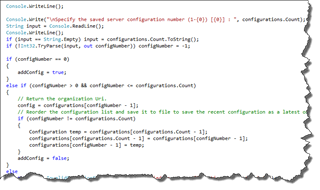




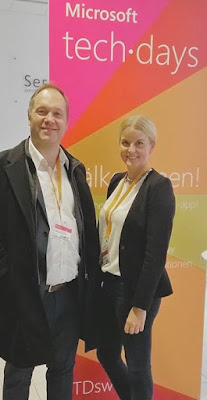

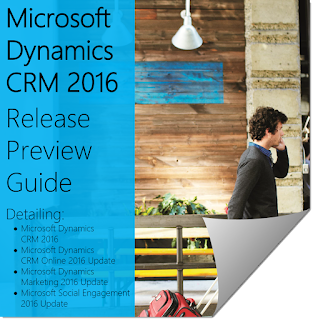





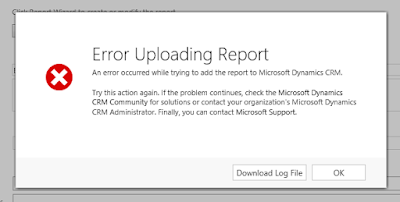


.jpg)